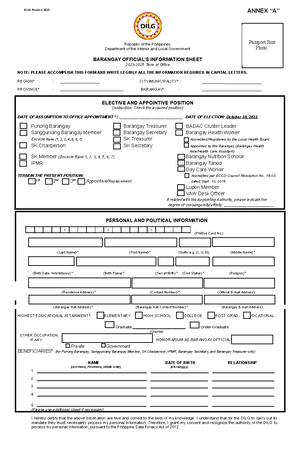- Information
- AI Chat
Was this document helpful?
Micro Mnemonics - BSMLS
Course: BS Medical Laboratory Science (MLS 024)
364 Documents
Students shared 364 documents in this course
University: Southwestern University PHINMA
Was this document helpful?

All COCCI are GRAM (+) except:
“No Boyfriend Muna para Virgin”
Neisseria
Moraxella (old name: Branhamella)
Veilonella
All BACILLI are GRAM (-) except:
“B2L2AC2MEN”
Bacillus
Bifidocaterium
Listeria
Lactobacillus
Actinomyces
Clostridium
Corynebacterium
Mycobacteria
Erysiphelotrix
Nocardia
TESTS:
SCHICK TEST C. diphtheriae
ANTON TEST Listeria
CASONI TEST E. granulosus
BACHMANN TEST T. spiralis
MANTOUX TEST M. tuberculosis
MOAN TEST A. lumbricoides
ASCOLI TEST B. anthracis
ALL ABOUT AIDS
AIDS (overall) → C. albicans
AIDS (tuberculosis) → Mycobacterium
avium intracellular complex
AIDS pneumonia → P. jirovecii
AIDS meningitis → C. neoformans
AIDS dementia → T. gondii
AIDS dementia → C. parvum
Most commonly associated with human
disease
(immunocompromised px) → R. equi
CYSTIC FIBROSIS PATIENTS
Most to least pathogens
1. P. aeruginosa
2. B. cepacia
3. S. aureus
3 BULLS OF BACTERIOLOGY
Bull’s Neck → C. diphtheriae
Bull’s Eye rash → B. burgdorferi
Bull’s Eye colony → Y. enterocolitica (on
CIN)
ANTIBODIES PRODUCED S. PYOGENES
“SDSH”
Antistreptolysin (ASO)
anti-DNase B
Antistreptokinase
Antihyaluronidase
STREPTOCOCCI
Group A streptococci – S. pyogenes
Group B streptococci – S. agalactiae
Differentiating point:
S. pyogenes → HIPPURATE HYDROLYSIS (-)
S. agalactiae → HIPPURATE HYDROLYSIS (+)
“Masyado pa ma-AGA para mang-HIPPU!
Kailangan ma-AGA gumising pag may
CAMPing”
“Sa CAMPing, dapat ma-AGA ang gising,
sabay mumog ng LISTERine”.
Differentiating point:
S. agalactiae → CAMP POSITIVE, CATALASE NEG.
L. monocytogenes → CAMP POSITIVE, CATALASE POS.
CAUSE OF MENINGITIS by AGE GROUP
Neonates (0 – 1 month) → S. agalactiae
“Pinaka ma-AGAng stage ng buhay”
Children (1 – 5 yrs) → H. influenzae
“Mabilis maINFLUEZAhan”
Adolescent (5 yrs – 29 yrs) → N. meningitidis
“Dito tayo nagiging MEN”
Geriatrics → S. pneumoniae
“Tumandang may PNEUMONYA”
Immunocompromised → L. monocytogenes
“Pag madaming kang sakit baka magkaroon ka ng
HYSTERIA?! a.ka Listeria”
NOVOBIOCIN
S. saprophyticus → RESISTANT
“Kasi pag PRO ka na, hindi ka na NOOB/NOV”
S. epidermidis → SENSITIVE
“Kasi EPIDERMis is a layer of the skin, este, my skin is
SENSITIVE”











